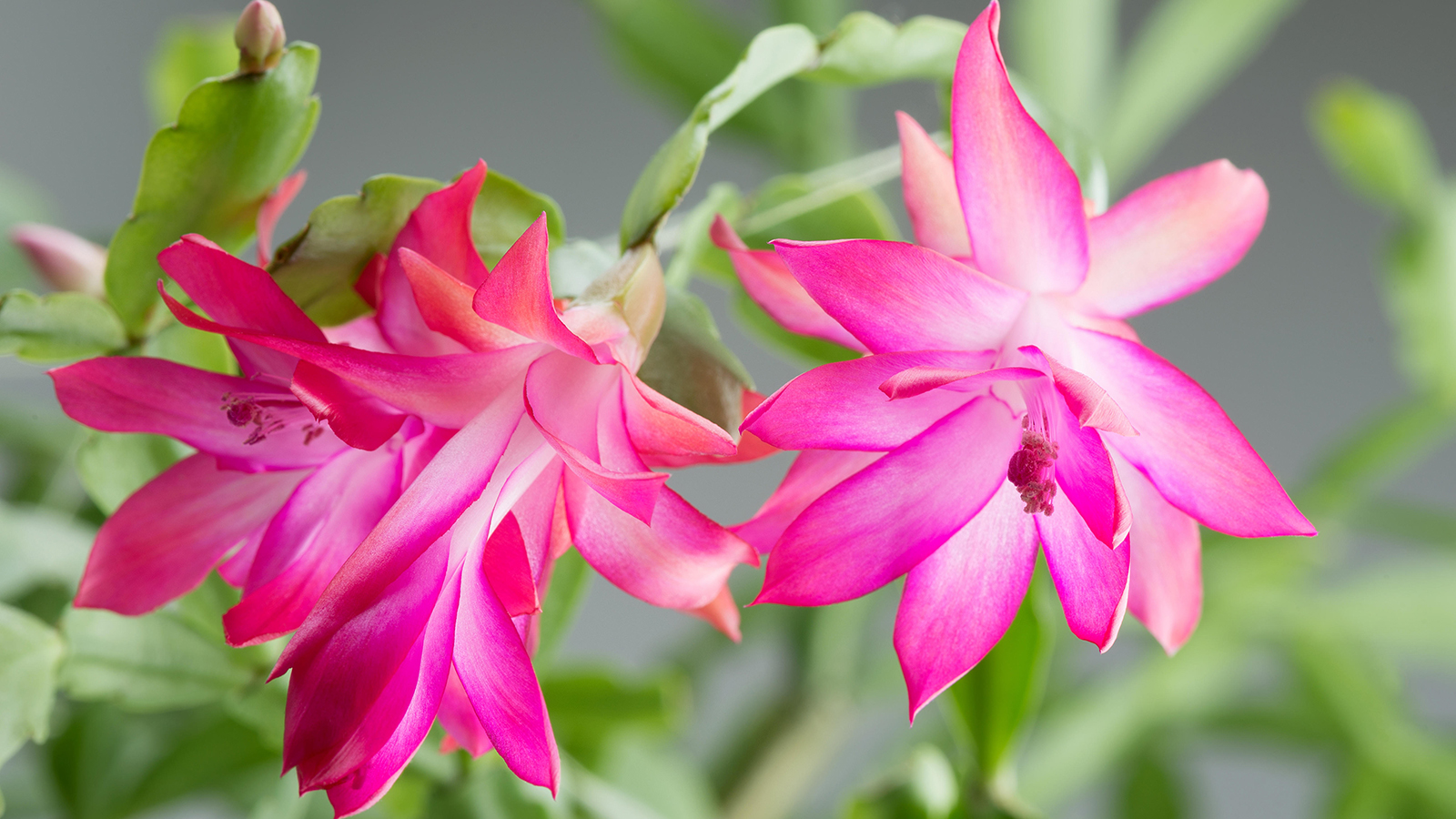Are you nurturing a Christmas cactus that’s bursting with vibrant blooms, yet wondering if a little extra nourishment could enhance its beauty? You’re not alone.
Many plant enthusiasts find themselves pondering Should I Fertilize My Christmas Cactus While Blooming? The answer to this question might surprise you, and understanding it could transform how your cactus thrives during its most dazzling display. Before you reach for that fertilizer, let’s delve into what your Christmas cactus truly needs right now.
This insight could be the key to unlocking a healthier, more brilliant bloom. Keep reading to discover the secrets of optimal care for your festive flora.
Christmas Cactus Care
The Christmas cactus is a beloved holiday plant. Its vibrant blooms bring festive cheer. Proper care ensures it thrives during the blooming season. Understanding its needs is crucial for healthy growth. Let’s explore how to nurture your Christmas cactus.
Ideal Growing Conditions
The Christmas cactus prefers a cool environment. Temperatures between 60-70°F are ideal. Humidity levels should be moderate. This mimics its natural habitat. Avoid placing it near drafts or heat sources. Stable conditions support healthy blooms.
Watering Needs
Watering the Christmas cactus requires attention. The soil should remain slightly damp. Overwatering can lead to root rot. Let the top inch of soil dry before watering again. Use room temperature water for best results. Adjust watering during blooming periods.
Light Requirements
Light is essential for Christmas cactus growth. Indirect sunlight works best. Direct sunlight can scorch its leaves. A north or east-facing window is ideal. During blooming, it benefits from bright light. Keep it away from intense afternoon sun.
:max_bytes(150000):strip_icc()/how-to-care-for-your-christmas-cactus-0822-2000-a3407f3e2abe4eee8e93bcec557e65f4.jpg)
Credit: www.marthastewart.com
Understanding Blooming Phase
Understanding the blooming phase of your Christmas cactus is crucial. This period is when the plant showcases its vibrant flowers. Knowing how to care for it during this time ensures it remains healthy and beautiful. Many plant enthusiasts wonder if fertilizing during blooming is necessary. Let’s explore this topic further.
Blooming Season
The blooming season for Christmas cacti usually starts in late fall. It can extend through winter. The plant needs cooler temperatures and long nights to bloom. This season coincides with shorter days and cooler temperatures. Proper light exposure is key for the plant to flourish.
Signs Of Blooming
Recognizing the signs of blooming in your cactus is essential. Look for plump, colorful buds. They signal the start of blooming. The plant may also have vibrant green leaves. This indicates good health and readiness to bloom. These signs show your plant is thriving.
Impact Of Blooming On Plant Health
Blooming affects the plant’s energy and nutrient needs. The plant uses more nutrients during this phase. This is due to the growth of flowers. Proper care ensures the plant stays strong. Over-fertilizing can harm the plant, though. Balanced nutrition is key for health.
Fertilizing Basics
Fertilizing your Christmas cactus can enhance its blooming phase. Understanding the basics of fertilizing is key. The right nutrients and schedule help the plant thrive. Let’s explore the essentials of fertilizing your Christmas cactus.
Types Of Fertilizers
Different fertilizers suit different plant needs. Liquid fertilizers are popular for Christmas cacti. They offer quick nutrient absorption. Granular fertilizers release nutrients slowly over time. Organic fertilizers improve soil health. Choose a fertilizer that aligns with your plant care routine.
Nutrient Requirements
Christmas cacti need balanced nutrients. Nitrogen supports healthy leaf growth. Phosphorus boosts blooming and root development. Potassium strengthens the plant’s overall health. A 20-20-20 fertilizer mix works well. Make sure your fertilizer includes these key nutrients.
Frequency Of Fertilization
Fertilize your Christmas cactus every two weeks during blooming. Over-fertilizing can harm the plant. Less frequent fertilization is better than too much. Monitor the plant’s response to adjust the schedule. Consistent care leads to vibrant blooms.
Effects Of Fertilizing While Blooming
Fertilizing plants is a common practice to boost growth and blooms. But is it wise to fertilize a Christmas cactus while it’s blooming? This question often puzzles plant enthusiasts. Understanding the effects of fertilizing during this phase is essential. Let’s explore the potential benefits and risks. Insights from plant experts will guide us further.
Potential Benefits
Fertilizing during blooming might enhance flower longevity. Nutrients support vibrant blooms. Some gardeners observe brighter colors when fertilized. The right nutrients can promote healthier growth. Enhanced blooms can create a stunning display. The plant might produce more flowers. Fertilizers provide essential nutrients. This can strengthen the plant’s overall health.
Possible Risks
Over-fertilizing can harm the Christmas cactus. It might stress the plant. Excess nutrients can lead to root burn. This affects the plant’s ability to absorb water. Some fertilizers contain salts. High salt levels can damage roots. The plant might shed its blooms prematurely. Fertilizing during blooming needs caution. It can disrupt the flowering cycle.
Observations From Plant Experts
Plant experts recommend caution during blooming. They suggest using diluted fertilizers. Slow-release formulas are often preferred. Experts note varying plant responses. Some Christmas cacti thrive without extra nutrients. Others benefit from gentle feeding. Observing the plant’s reaction is key. Experts emphasize watching for signs of stress.
Alternatives To Fertilizing
Consider holding off on fertilizing your Christmas cactus during blooming. Nutrients might disrupt its natural flowering cycle. Try using alternative methods like adjusting light exposure to support healthy growth.
When your Christmas cactus blooms, fertilizing might not be ideal. Fertilizers can sometimes stress plants during flowering. Consider natural alternatives to support your blooming cactus.
Natural Boosters
Enhance your cactus with natural ingredients. Eggshells provide calcium, strengthening plant structure. Coffee grounds add nitrogen, boosting growth. Banana peels contain potassium, aiding flower health. These simple items from your kitchen can nourish your cactus.
Soil Quality Enhancement
Healthy soil is crucial for your cactus. Mix compost into the soil for nutrients. It improves texture and retains moisture. Add perlite or sand for better drainage. This prevents root rot, keeping your cactus healthy. A well-balanced soil encourages vibrant blooms.
Water Management Techniques
Proper watering supports your cactus. Check soil moisture before watering. Too much water can cause harm. Use lukewarm water. Cold water can shock your cactus. Water sparingly, keeping the soil slightly damp. Proper hydration aids in maintaining flowers. Adjust watering based on humidity levels. This ensures your cactus thrives during blooming.

Credit: www.gardeningknowhow.com
Expert Recommendations
Fertilizing a Christmas cactus during its blooming phase can be confusing. Many gardeners seek expert recommendations to ensure vibrant blooms. Understanding the needs of your Christmas cactus is crucial. Experts provide valuable insights on fertilizing practices. This section explores professional insights, common mistakes, and best practices.
Professional Insights
Experts advise caution with fertilizing blooming Christmas cacti. The plant is sensitive during this period. Fertilizer can impact bloom quality. Use a balanced, water-soluble fertilizer. Apply sparingly to avoid overstimulation. Experts suggest feeding every 4 to 6 weeks. This maintains healthy growth without overwhelming the plant.
Common Mistakes To Avoid
Avoid over-fertilizing during blooming. It can cause nutrient burn. This leads to wilting and poor flower formation. Avoid high-nitrogen fertilizers. These promote leaf growth over blooms. Ensure the soil is not soggy. Overwatering combined with fertilizing can harm roots. Check for salt build-up in the soil. This affects plant health and bloom quality.
Best Practices For Healthy Blooms
Use a diluted fertilizer solution. This reduces the risk of nutrient overload. Ensure proper drainage in the pot. It prevents root rot and nutrient lock. Opt for fertilizers with phosphorus. Phosphorus supports healthy blooms. Maintain a consistent watering schedule. This ensures your cactus thrives and blooms beautifully. Monitor humidity levels. Christmas cacti prefer moderate humidity for optimal growth.
Signs Of Over-fertilization
The Christmas cactus, with its vibrant blooms, can brighten any winter space. Yet, over-fertilization can hinder its beauty and health. Identifying signs of excess nutrients is crucial for maintaining this plant’s vitality.
Recognizing Symptoms
Yellowing leaves often indicate too much fertilizer. Wilted stems suggest nutrient overload. Weak, soft roots can also be a sign. Soil crusting may occur from excessive salts. Slow growth is another warning. Be observant of these changes.
Immediate Actions To Take
Stop fertilizing immediately. Flush the soil with water to remove excess nutrients. Allow the cactus to dry thoroughly. Check the pot’s drainage to ensure water isn’t trapped. Trim any damaged roots or stems. These steps can prevent further harm.
Long-term Recovery Strategies
Adjust the fertilizing schedule to avoid future issues. Use a balanced, diluted fertilizer. Monitor the plant’s response closely. Maintain consistent watering practices. Consider repotting in fresh soil if needed. This helps restore the cactus’s health over time.

Credit: www.pennington.com
Frequently Asked Questions
Can I Fertilize My Christmas Cactus In Bloom?
Yes, you can fertilize while it’s blooming, but with caution. Use a diluted, balanced fertilizer to avoid overfeeding. Too much fertilizer can stress the plant and affect bloom quality. Fertilizing every 4-6 weeks is sufficient. Always follow the package instructions for best results.
What Type Of Fertilizer Is Best?
A balanced, water-soluble fertilizer is ideal for Christmas cactus. Look for one with equal parts nitrogen, phosphorus, and potassium. A formula like 10-10-10 or 20-20-20 works well. Dilute it to half-strength to prevent over-fertilizing. This helps maintain healthy blooms and foliage.
How Often Should I Fertilize My Christmas Cactus?
During blooming, fertilize every 4-6 weeks. This maintains nutrient levels without overwhelming the plant. Avoid fertilizing more frequently as it can lead to nutrient burn. Always monitor the plant’s response and adjust as needed. Consistency is key for healthy growth.
Can Over-fertilizing Harm My Christmas Cactus?
Yes, over-fertilizing can harm your Christmas cactus. It can lead to nutrient burn, affecting leaf and bloom health. Symptoms include leaf discoloration and dropped buds. Always use a diluted solution and follow package instructions. Less is often more when it comes to fertilizing.
Conclusion
Fertilizing your Christmas cactus during blooming needs care. Overfeeding can harm the plant. Use a balanced fertilizer sparingly for best results. Timing is crucial. Fertilize before the blooming phase starts. This helps strengthen the plant. Once blooming begins, reduce fertilizing.
Too much can stress the cactus. Watch for signs of health. Yellow leaves or slow growth might signal a need. Adjust your care routine accordingly. Remember, each plant is different. Observe and respond to its needs. Your Christmas cactus will thrive with the right balance.
Enjoy its vibrant blossoms each season. Happy gardening!
